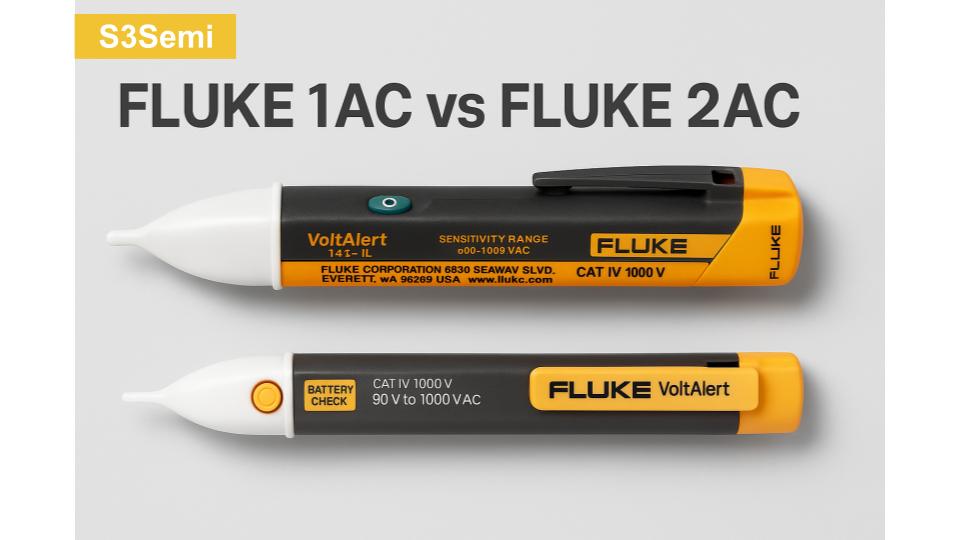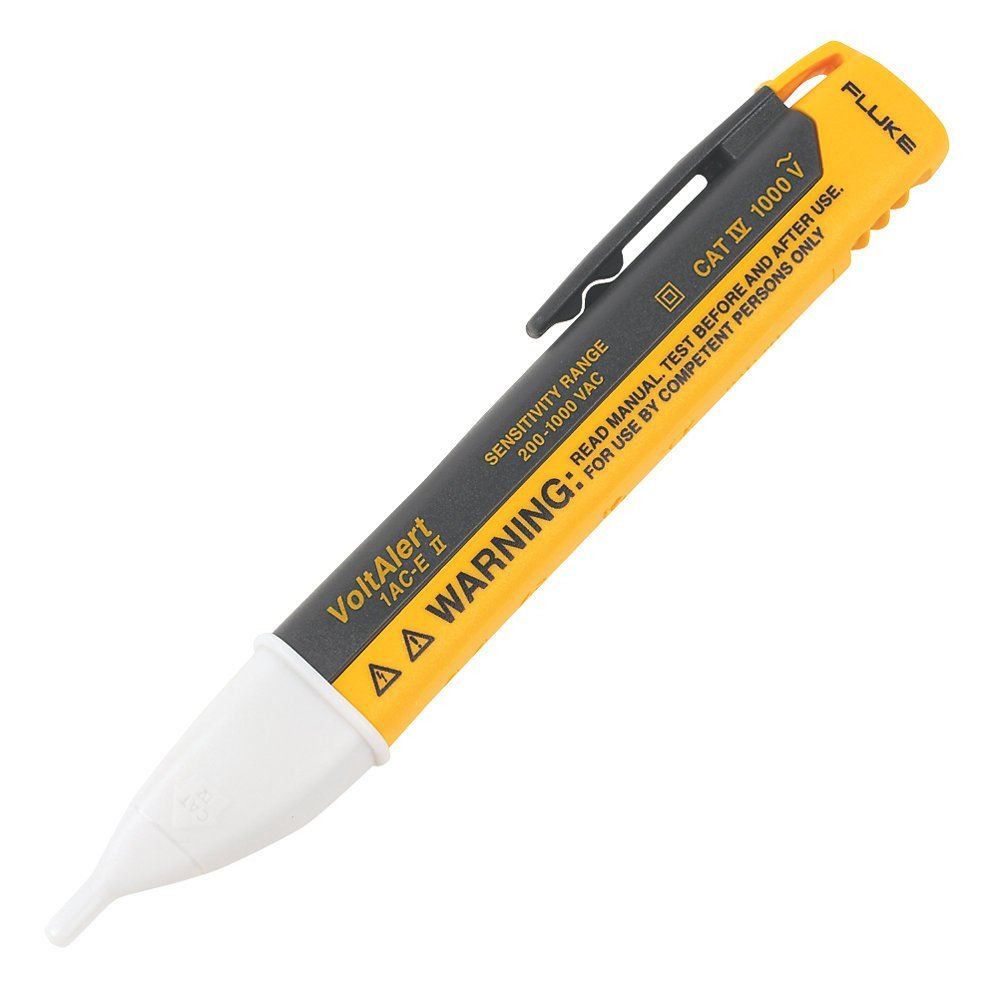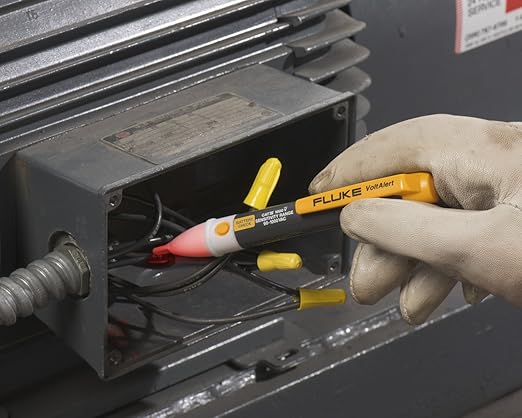When it comes to electrical safety and quick voltage detection two popular non-contact voltage testers, the Fluke 1AC and Fluke 2AC, are worth considering.
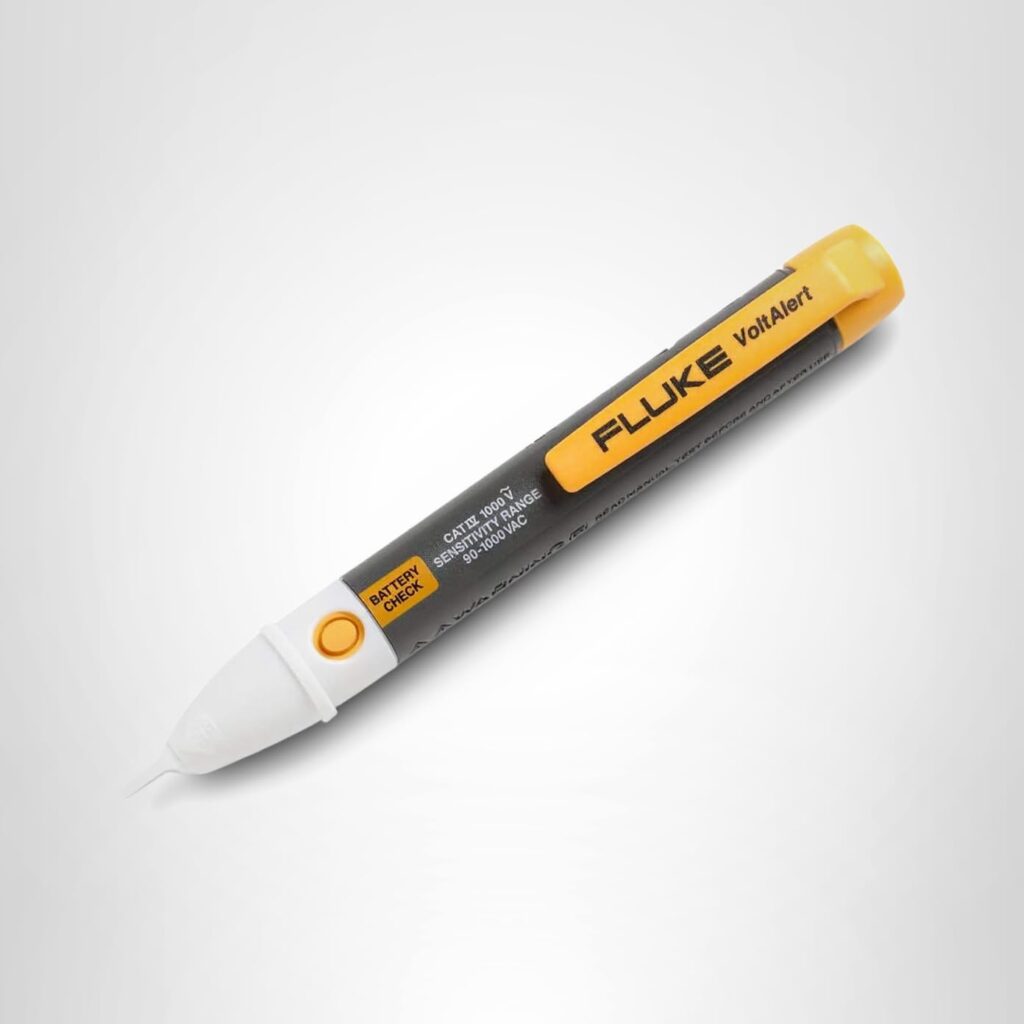
🏷️ Fluke Voltage Tester Deals ⭐⭐⭐⭐
Voltage testers are designed to help electricians, maintenance technicians, and DIY users identify live circuits safely and efficiently.
While they share the same basic function – detecting AC voltage without direct contact, there are subtle but important differences in design, sensitivity, and usability. Let’s compare both to help you decide which one is right for your work.
🔍 Overview of the Fluke 1AC
The Fluke 1AC II VoltAlert is one of the most widely used non-contact voltage testers in the world. It’s compact, reliable, and designed for quick go-no-go voltage checks in outlets, switches, lighting fixtures, and cables.

Key Features:
- Detects AC voltage from 90V to 1000V
- Audible and visual alerts (red LED + beeping sound) when voltage is detected
- Always-on feature – ready for use instantly
- Powered by two AAA batteries
- CAT IV 1000V safety rating
- Rugged and pocket-friendly design
Best For: Electricians, maintenance professionals, and field technicians who need a fast, dependable way to check live wires and circuits.
⚙️ Overview of the Fluke 2AC
The Fluke 2AC VoltAlert builds upon the 1AC design, offering similar voltage detection capability but with enhanced reliability and convenience features.
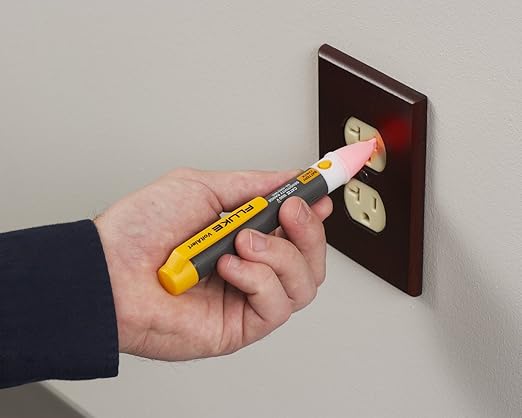
It’s designed for professionals who perform frequent voltage checks and need a tester that’s always ready to go.
Key Features:
- Detects AC voltage from 90V to 1000V (50/60 Hz)
- Always-on functionality with internal self-test
- Green power indicator light shows it’s active and working correctly
- Improved battery check circuit to prevent false readings
- Durable, ergonomic housing
- CAT IV 1000V safety rating
Best For: Professionals who want a continuously active, easy-to-see voltage detector that provides both visual and audible feedback with added self-test assurance.
📊 Comparison Table
| Feature | Fluke 1AC II | Fluke 2AC |
|---|---|---|
| Voltage Range | 90V – 1000V AC | 90V – 1000V AC |
| Frequency Range | 50 / 60 Hz | 50 / 60 Hz |
| Detection Type | Non-contact | Non-contact |
| Audible Alert | ✅ Yes | ✅ Yes |
| Visual Alert | ✅ Red LED | ✅ Green “Power On” + Red “Voltage Detected” LEDs |
| Self-Test Function | ❌ No | ✅ Yes |
| Always-On Mode | ✅ Yes | ✅ Improved version with battery check |
| Safety Rating | CAT IV 1000V | CAT IV 1000V |
| Battery Type | 2 × AAA | 2 × AAA |
| Size | Compact | Slightly thicker housing |
| Ideal Use | General electrical testing | Frequent, professional voltage detection |
| 💳 Pricing | 💲Check Price | 💲Check Price |
✅ Pros and Cons
Fluke 1AC Pros
- Simple, affordable, and easy to use
- Reliable go-no-go voltage detection
- Compact and pocket-friendly design
- Excellent safety rating (CAT IV 1000V)
Fluke 1AC Cons
- No self-test or battery health indicator
- LED only activates when live voltage is present
Fluke 2AC Pros
- Continuous self-test ensures device reliability
- Green “ready” light provides instant visual confirmation
- Reduces false readings due to low battery
- Same rugged durability as the 1AC
Fluke 2AC Cons
- Slightly higher cost
- Slightly bulkier body
🏆 Verdict: Fluke 1AC or Fluke 2AC?
Both the Fluke 1AC and Fluke 2AC are excellent, safe, and durable tools for quick voltage detection – but they serve slightly different users.
- Choose the Fluke 1AC if you need a simple, budget-friendly tester for occasional use or basic electrical checks. It’s dependable and ideal for general troubleshooting.
- Choose the Fluke 2AC if you’re a professional electrician or maintenance technician who performs voltage checks daily. Its self-test feature and green “ready” indicator make it more reliable for continuous field use.
👉 In short:
- Fluke 1AC = Best for occasional, straightforward voltage detection.
- Fluke 2AC = Best for professionals who want extra safety and reliability.
